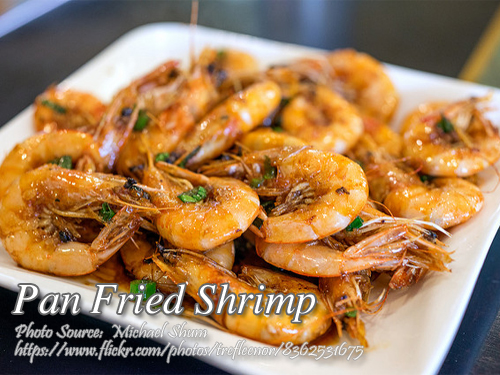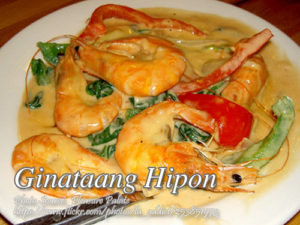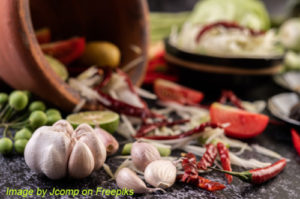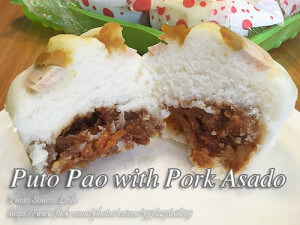A very simple and quick cooking shrimp that you can cook anytime. These pan fried shrimp are sauteed with garlic and gin in olive oil. I think this is also a variation of nilasing na hipon or drunken shrimps but this recipe is simpler because you don’t have to make batter and deep fry the shrimps.
Pan Fried Shrimp (Gambas Ala Plancha)
One of my fondest childhood memories is of lazy Sunday afternoons at my Lola’s house in Cavite. We’d all gather around her small kitchen, and the air would be filled with the mouthwatering aroma of garlic sizzling in olive oil. My Tiyo Jun, who was a master at cooking quick seafood dishes, often took charge of the stove when it came to shrimp. He had a knack for keeping things simple yet incredibly flavorful, and his pan fried shrimp was always the star of the table. It’s a dish that’s as easy to make as it is delicious to eat.
This recipe reminds me so much of those gatherings. The combination of plump, juicy shrimp, rich olive oil, and the heady scent of garlic is a classic that never fails. What makes this version stand out is the secret ingredient—a splash of gin. My cousin Nino, who first introduced me to this technique, swears it’s the key to enhancing the shrimp’s natural sweetness. It’s like a simpler version of nilasing na hipon, or drunken shrimp, but without the deep frying and batter. If you’re looking for a quick and satisfying dish, this one’s for you.
What Makes Pan Fried Shrimp Special?
Pan fried shrimp, also known as gambas ala plancha, is the perfect marriage of simplicity and flavor. The dish is deeply rooted in Spanish cuisine, but Filipinos have made it their own by adding unique touches like the use of gin. The technique of soaking shrimp in a gin and salt mixture may sound unusual, but it’s a game-changer. The alcohol tenderizes the shrimp while drawing out its natural sweetness, leaving you with perfectly seasoned seafood.
Another secret to the dish’s flavor is the way the garlic is handled. By sautéing it over low heat until golden brown, you coax out its sweetness and aroma, creating a rich base for the shrimp. High heat ensures a quick sear, locking in the shrimp’s juices and giving it a slightly smoky flavor. The combination of these techniques creates a dish that’s both quick to make and bursting with layers of taste.
The Nostalgia of Cooking with Family
The beauty of this recipe lies not just in its flavor but also in the memories it creates. Growing up, this was one of the first dishes I learned to cook. My Ate Liza, who had spent some time in Spain, showed me how to make gambas ala plancha one summer when she visited from Madrid. She explained that the simplicity of the dish is what makes it so versatile.
We’d gather the freshest shrimp from the local palengke early in the morning. “Always pick the ones with firm shells and a briny smell,” she’d remind me. Back in the kitchen, she’d let me peel the garlic while she prepared the gin marinade. Those moments in the kitchen, surrounded by laughter and the clinking of pans, are memories I hold dear to this day.
Why These Cooking Techniques Work
The techniques used in this pan fried shrimp recipe are straightforward but essential to achieving the best flavor and texture. Soaking the shrimp in gin and salt is more than just a flavor enhancer; it’s a way to tenderize the shrimp without overcooking it. The alcohol helps infuse the shrimp with subtle notes that complement its natural taste.
Sautéing the garlic slowly in olive oil releases its sugars, giving it a sweeter and milder flavor. This step also infuses the oil, which serves as the cooking medium for the shrimp. When the heat is turned up and the shrimp hits the pan, the infused oil helps sear the seafood quickly, creating a caramelized exterior while keeping the meat juicy.
Reintroducing the garlic at the end ties everything together, ensuring you get a burst of flavor in every bite. These simple steps come together to create a dish that’s full of depth and character.
A Taste of Tradition
Pan fried shrimp has a rich history that’s intertwined with Filipino dining culture. Though influenced by Spanish gambas ala plancha, this version’s use of gin gives it a distinctly Pinoy twist. It’s a dish that reflects the ingenuity of Filipino cooking, where simple ingredients are elevated through clever techniques.
It’s also a dish that’s perfect for any occasion. Whether you’re serving it as an appetizer for a family gathering or as the main star of a weeknight dinner, pan fried shrimp never disappoints. It’s quick, easy, and requires minimal ingredients, making it ideal for beginner cooks.
Bringing It All Together
Cooking pan fried shrimp is more than just preparing a meal; it’s an opportunity to create memories and celebrate the joys of simple, good food. Each time I make this dish, I’m transported back to my Lola’s kitchen, where love and laughter filled the air. It’s a reminder of how food has the power to bring people together, one plate at a time.
If you’ve never tried making pan fried shrimp before, there’s no better time than now. It’s a dish that doesn’t just satisfy your hunger but also warms your soul. So go ahead, gather your ingredients, and let the aroma of garlic and olive oil fill your kitchen. Who knows? It might just become a new family favorite, just like it is in mine.
How to Cook Pan Fried Shrimp (Gambas Ala Plancha)
Ingredients
- 1/4 kilo fresh shrimp about 1 and 1/2 inch size Washed and antennae removed and drained
- 2 Tbsp. gin or vodka
- 1 Tbsp. salt
- 2 Tbsp. minced garlic
- 2 Tbsp. olive oil
Instructions
How to Cook Pan Fried Shrimp:
- Soak shrimp in gin with salt for about 2 hours then drain.
- In a thick frying pan and over low fire, saute garlic in olive oil until light golden brown.
- With a slotted spoon, remove garlic and set aside.
- Increase heat to high and when oil begins to smoke, stir in shrimp until they are deep orange.
- Return garlic to pan, toss for 1 minute, then serve hot.
Notes
Cooking Tips:
Choose Fresh and Firm Shrimp
Always select fresh, firm shrimp for the best results. Look for shrimp with a slightly translucent shell and a mild, ocean-like scent. Avoid those with a strong fishy odor, as it indicates they are no longer fresh.Marinate for Flavorful Results
Soaking shrimp in gin with a pinch of salt enhances its natural sweetness and adds subtle complexity to the flavor. Let the shrimp marinate for at least two hours to fully absorb the seasoning. This step also ensures the shrimp stays tender when cooked.Use High Heat for Perfect Sear
Cooking shrimp on high heat locks in its juices and gives it a lightly caramelized exterior. Make sure the oil is hot enough to smoke slightly before adding the shrimp. This quick cooking method prevents the shrimp from becoming rubbery.





